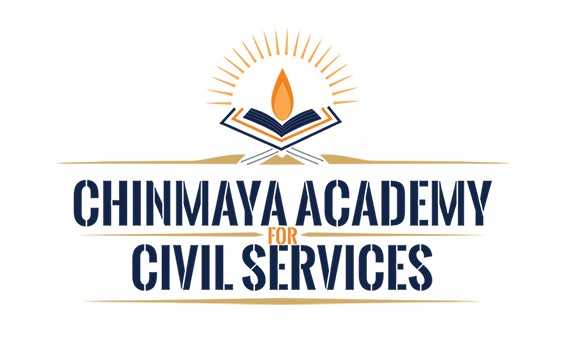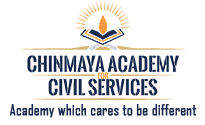The UPSC offers economics as an optional discipline in the Mains exam. Economics has a decent success rate among applicants despite not being as famous as some other disciplines, such as geography or public administration. Aspirants have topped UPSC having Economics as their optional subject. If you want to learn this subject well, you must have a true passion for it. Some people feel this subject is too boring. The candidate’s ability to understand economics will improve with practising test questions. Therefore, just like every other field of study, economics has its fair share of advantages and disadvantages. Before choosing economics as an optional, you should evaluate your own aptitude and interests.
Economics Optional Paper I
- Advanced Micro Economics: (a) Marshallian and Varrasiam Approaches to Price determination. (b) Alternative Distribution Theories; Ricardo, Kaldor, Kaleeki. (c) Markets Structure : Monopolistic Competition, Duopoly, Oligopoly. (d) Modern Welfare Criteria : Pareto Hicks and Scitovsky, Arrow’s Impossibility Theorem, A. K. Sen’s Social Welfare Function.
- Advance Macro Economics: Approaches to Employment Income and Interest Rate determination : Classical, Keynes (IS)-LM) curve, Neo-classical synthesis and New classical, Theories of Interest Rate determination and Interest Rate Structure.
- Money-Banking and Finance: (a) Demand for and Supply of Money : Money Multiplier Quantity Theory of Money (Fisher, Pique and Friedman) and Keyne’s Theory on Demand for Money, Goals and Instruments of Monetary Management in Closed and Open Economies. Relation between the Central Bank and the Treasury. Proposal for ceiling on growth rate of money. (b) Public Finance and its Role in market Economy : In stabilisation of supply, allocative, of resources and in distribution and development. Sources of Government revenue, forms of Taxes and Subsidies, their incidence and effects. Limits to taxation, loans, crowding-out effects and limits to borrowings. Public expenditure and its effects.
- International Economics: (a) Old and New theories of International Trade. (i) Comparative advantage, (ii) Terms of Trade and Offer Curve. (iii) Product Cycle and Strategic Trade Theories. (iv) Trade as an engine of growth and theories of underdevelopment in an open economy. (b) Forms of Protection : Tariff and quota. (c) Balance of Payments Adjustment : Alternative Approaches. (i) Price versus income, income adjustments under fixed exchange rates. (ii) Theories of Policy Mix. (iii) Exchange rate adjustments under capital mobility. (iv) Floating Rates and their Implications for Developing Countries : Currency Boards. (v) Trade Policy and Developing Countries. (vi) BOP, adjustments and Policy Coordination in open economy macromodel. (vii) Speculative attacks. (viii) Trade Blocks and Monetary Unions. (ix) WTO : TRIMS, TRIPS, Domestic Measures, Different Rounds of WTO talks.
- Growth and Development: (a) (i) Theories of growth : Harrod’s model; (ii) Lewis model of development with surplus labour. (iii) Balanced Unbalanced Growth. (iv) Human Capitals and Economic Growth. (v) Research and Development and Economic Growth. (b) Process of Economic Development of less developed courtries : Myrdal and Kuzments on economic development and structural change : Role of Agriculture in Economic Development of less developed countries. (c) Economic Development and International Trade and Investment, Role of Multinationals. (d) Planning and Economic Development : changing role of Markets and Planning, Private-Public Partnership. (e) Welfare indicators and measures of growth—Human Development Indices. The basic needs approach. (f) Development and Environmental Sustainability— Renewable and Non-renewable Resources, Environmental Degradation, Intergenerational equity development.
Economics Optional Paper II
Indian Economics in Post-Independence Era: Land System and its changes, Commercialization of agriculture Drain theory, Laissez faire theory and critique. Manufacture and Transport : Jute, Cotton, Railways, Money and Credit. Indian Economy after Independence : A. The Pre-Liberalization Era : (i) Contribution of Vakil, Gadgil and V.K.R.V. Rao. (ii) Agricultrure : Land Reforms and land tenure system, Green Revolution and capital formation in agriculture. (iii) Industry Trends in composition and growth, Role of public and private sector, small scale and cottage industries. (iv) National and Per capita income : Patterns, trends, aggregate and sectoral composition and changes therein. (v) Broad factors determining National Income and distribution, Measures of poverty, Trends in poverty and inequality. B. The Post-Liberalization Era : (i) New Economic Reform and Agriculture : Agriculture and WTO, Food processing, subsidies, Agricultural prices and public distribution system, Impact of public expenditure on agricultural growth. (ii) New Economic Policy and Industry : Strategy of industrialization, Privatization, Disinvestments, Role of foreign direct investment and multinationals. (iii) New Economic Policy and Trade : Intellectual property rights : Implications of TRIPS, TRIMS, GATS and new EXIM policy. (iv) New Exchange Rate Regime : Partial and full convertibility, Capital account convertibility. (v) New Economic Policy and Public Finance : Fiscal Responsibility Act, Twelfth Finance Commission and Fiscal Federalism and Fiscal Consolidation. (vi) New Economic Policy and Monetary System. Role of RBI under the new regime. (vii) Planning : From central Planning to indivative planning, Relation between planning and markets for growth and decentralized planning : 73rd and 74th Constitutional amendments. (viii) New Economic Policy and Employment : Employment and poverty, Rural wages, Employment Generation, Poverty alleviation schemes, New Rural, Employment Guarantee Scheme.
Other Optional Subjects
Agriculture
Animal Science
Anthropology
Botany
Chemistry
Civil Engineering
Commerce and Accountancy
EEE Engineering
Geography
Geology
History
Law
Management
Mathematics
Mechanical Engineering
Medical Science
Philosophy
Physics
Political science
Psychology
Public Administration
Sociology
Statistics
Zoology


